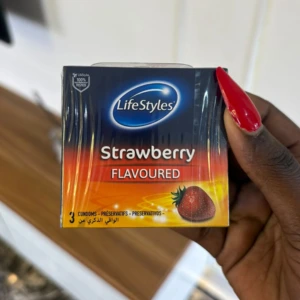The Complete Medical Guide to Using Condoms and Birth Control Safely
1. Why Using Condoms and Birth Control Matters
When it comes to sexual health, few topics are as important as using condoms and birth control. Both are not only tools for preventing unplanned pregnancies but also essential in reducing the risk of sexually transmitted infections (STIs).
Some people believe condoms are only for casual encounters, while others think birth control pills are the only “serious” form of prevention. In truth, both methods have unique roles, benefits, and limitations.
This guide answers common questions and offers evidence-based insights so you can make informed, safe, and confident decisions about your reproductive health.
2. What Are Condoms and How Do They Work?
Condoms are one of the oldest and most accessible forms of contraception. Essentially, a condom is a thin sheath, usually made of latex, polyurethane, or polyisoprene, that covers the penis during sexual intercourse.
Its primary purpose is to act as a barrier, preventing sperm from entering the vagina and thus reducing the chance of pregnancy. At the same time, condoms block the exchange of bodily fluids, which dramatically lowers the risk of transmitting infections.
3. Types of Condoms
Condoms are not all the same. Depending on your needs, there are several types available:
1. Latex Condoms
- Most common and widely used.
- Highly effective, but unsuitable for people with latex allergies.

2. Polyurethane Condoms
- Made of a type of plastic.
- Thinner than latex, provide a more “natural” feel, and are safe for those with latex allergies.
3. Polyisoprene Condoms (e.g., SKYN Condoms)
- A synthetic rubber that is softer than latex.
- Latex-free but still elastic and comfortable.
4. Female Condoms
- A pouch worn inside the vagina.
- Provides barrier protection but is less popular due to cost and availability.

5. Special Condoms
- Flavored, textured, ultra-thin, dotted or extra-strong versions.
- Designed for specific experiences but still provide contraceptive protection.

4. How Condoms Prevent Pregnancy
When used correctly, condoms are highly effective. According to the American Center for Disease Control and Prevention:
- Perfect use: 98% effective
- Typical use: 85% effective
The difference between perfect and typical use lies in human error—forgetting to put it on early enough, tearing it while opening, or not leaving space at the tip.
5. How Condoms Prevent STIs
Unlike most other forms of birth control, condoms are unique because they also protect against sexually transmitted infections. This includes:
- HIV/AIDS
- Gonorrhea
- Chlamydia
- Syphilis
- Trichomoniasis
- Human papillomavirus (HPV) (partial protection, as HPV can spread through skin-to-skin contact)
This is why many doctors recommend that even couples using birth control pills or an IUD should still consider using condoms and birth control together for maximum protection.
Advantages of Condoms
- Widely available without prescription.
- Affordable (often less than $1 each).
- Portable and discreet.
- No hormones or systemic side effects.
- Immediate effectiveness.
“Medical queries regarding Condom and birth pill may be directed to consultation@erectileandfertilityguide.com for further assistance.”
Disadvantages of Condoms
- May reduce sensitivity for some users.
- Risk of breakage or slipping if not used correctly.
- Requires interruption before sexual activity.
- Some people may experience latex allergy.
Medical Perspective
From a professional viewpoint, condoms are indispensable. Even in scenarios where highly effective contraception like an IUD is in place, recommend dual protection is recommend—using condoms along with another birth control method.
6. How Many Condoms Come in a Box?
One of the most practical questions people ask when they first decide to start using condoms and birth control is: how many condoms come in a box? The answer depends on the brand, retailer, and packaging style.
Standard Condom Packaging
- Single-use packs: Often handed out for free at clinics, universities, or sexual health campaigns.
- 3-pack boxes: The most common retail size, easy to find in pharmacies and convenience stores.
- 10–12 pack boxes: Popular among regular users; provides better value for money.
- 24, 36, or even 100 pack boxes: Bulk purchases for those who want to save money and avoid frequent trips to the store.
For example:
- Trojan (a well-known U.S. brand) often sells 12-count boxes.
- Durex sells 3, 12, or 36 packs.
- Online stores sometimes offer 50–100 packs for long-term users.
Why the Quantity Matters
When discussing using condoms and birth control, consistency is key. Having a box with more condoms at home ensures you are prepared at all times. Running out can increase the likelihood of unprotected sex, which undermines the purpose of contraception.
Medical advice: If you are sexually active, always keep extra condoms. It’s better to have more than you need than to run short at the wrong time.
7. What Are Skyn Condoms Made Of?
Skyn condoms are made from polyisoprene, a synthetic material that is completely free of natural rubber latex. This makes them a great option for people who are allergic to latex.

✅ For safe and reliable protection, you can buy trusted Skyn condoms here
Why Polyisoprene?
Polyisoprene is a man-made material designed to mimic the elasticity and strength of natural rubber but without the proteins that cause latex allergy. It is:
- Soft and flexible, providing a more “natural” feeling.
- Strong and durable, reducing the risk of breakage.
- Latex-free, suitable for people with sensitivities.
Benefits of Skyn Condoms
- Comfort: Many users report that Skyn condoms feel softer than latex.
- Safety: Just as effective in preventing pregnancy and STIs as latex condoms.
- Inclusivity: Opens the door for people who previously avoided condoms due to allergies.
8. How Long Does Sperm Live in Condoms?
This is a surprisingly important question when it comes to using condoms and birth control. People sometimes worry about what happens if semen is left inside a condom after sex.
Sperm Lifespan Inside a Condom
Normally, sperm can live up to 5 days inside the female reproductive tract, but in a condom, the environment is much less favorable. Once exposed to air, sperm begin to die quickly.
- At room temperature (in a dry condom): Most sperm die within a few minutes to an hour.
- If the condom is sealed or tied with semen inside: Sperm may survive a bit longer, but they are no longer viable for fertilization once the condom is removed from the body.

Can Sperm Escape from a Condom?
No—when used correctly, sperm cannot escape from a condom. However:
- If the condom breaks or leaks, pregnancy risk increases.
- If the condom is reused (which should never be done), live sperm could remain.
Medical Advice
- Always dispose of condoms immediately after use by tying a knot and throwing them in the trash.
- Do not flush condoms down the toilet (this can cause plumbing issues).
- Do not attempt to reuse a condom—they are designed for single use only.
This knowledge is critical when talking about using condoms and birth control. Even if sperm can live briefly in a used condom, the chance of pregnancy outside the body is virtually zero once the condom is removed and disposed of properly.
9. How to Know Your Condom Size
When discussing using condoms and birth control, one critical detail often overlooked is condom size. A condom that doesn’t fit properly can significantly reduce its effectiveness.
Why Size Matters
- Too tight: Risk of breakage, discomfort, and reduced sensitivity.
- Too loose: Risk of slipping off during intercourse, which compromises both pregnancy prevention and STI protection.
- Correct fit: Maximizes safety, comfort, and pleasure.
- Measuring for Condom Size
To know your correct condom size, measure two factors:
1. Penis Girth (circumference) – the most important factor.
Use a flexible measuring tape or a piece of string around the base of the erect penis.
Convert to millimeters for accuracy.
Example:
- 100–106 mm → Small
- 106–112 mm → Standard/Regular
- 112+ mm → Large/XL
2. Penis Length – matters less, but still relevant for comfort.
Most condoms fit average lengths, but extra-long sizes exist.
Condom Size Chart (Approximate)
- Small/Narrow Fit: Width 49 mm
- Standard/Regular Fit: Width 52–54 mm
- Large/XL Fit: Width 56–60 mm
Choosing the right condom size starts with correct measurements—learn how to measure penis size accurately to ensure safety and comfort.
10. How Old Do You Have to Be to Buy Condoms?
Another frequent question about using condoms and birth control is: what age do you have to be to buy condoms?
Legal Age Requirements
- In most countries (including the U.S., U.K., Canada, and much of Europe): There is no minimum age requirement to purchase condoms.
- In some conservative regions: Social stigma may exist, but medically and legally, condoms are available to anyone regardless of age.
Why This Matters
- Accessibility saves lives. Teenagers who can access condoms are more likely to avoid unintended pregnancies and STIs.
- Restricting access only increases unsafe sex practices.
Where Can Young People Get Condoms?
- Pharmacies and drugstores
- Supermarkets and convenience stores
- Online retailers (delivered discreetly)
- Sexual health clinics (often free)
- School or university health programs
11. What Happens If You Use an Expired Condom?
Expiration dates matter. Many people ignore this detail, but in using condoms and birth control, expired condoms can cause serious problems.
Risks of Using Expired Condoms
1. Material Weakness
- Latex and polyisoprene degrade over time.
- Expired condoms are more likely to break or tear.
2. Loss of Lubrication
- Expired condoms may dry out, increasing friction and the chance of breakage.3. Reduced Effectiveness
- Even if they don’t visibly break, expired condoms may not provide reliable protection against pregnancy or infections.
How to Check Condom Expiration
- Printed date on the wrapper or box.
- Generally, condoms last 3–5 years from the date of manufacture.
- Store in a cool, dry place away from heat or direct sunlight.
What to Do If You Used an Expired Condom
- Emergency contraception: If pregnancy is a concern, use emergency contraception (e.g., Plan B) within 72 hours.
- STD testing: If STI risk is present, seek medical testing.
- Future prevention: Always check expiration dates before use.
Medical perspective: never gamble with expired condoms. Their reliability is too compromised, and alternatives are widely available.
12. Why Combining Condoms and Birth Control Is the Gold Standard
using condoms and birth control together offers maximum protection.
Benefits of Dual Protection
1. Pregnancy Prevention
- Birth control (pills, IUDs, implants, injections) is highly effective.
- Condoms provide a backup in case of missed pills or device failures.
2. STI Prevention
- Birth control alone does not protect against STIs.
- Condoms are the only contraceptive that offers dual protection.
3. Peace of Mind
- Reduces anxiety about both pregnancy and infections.
- Improves sexual confidence and safety.
Medical advice: In clinical practice, dual protection is recommended, especially for young people, individuals with multiple partners, or anyone who wants complete protection.
13. Why Using Condoms and Birth Control Together Matters
Protection Against Pregnancy
• Birth control methods such as the pill, IUD, implant, or injection are excellent for preventing pregnancy.
• However, they are not 100% effective. For example:
- Pills: ~91% effective with typical use
- IUD: ~99% effective
- Condoms: ~85% effective with typical use
Combining both dramatically lowers risk, giving peace of mind.
- Protection Against Sexually Transmitted Infections (STIs)
- Birth control methods do not protect against STIs.
- Condoms reduce the transmission of HIV, chlamydia, gonorrhea, syphilis, and other infections.
- Using both ensures dual protection.
14. Best Practices for Condom Use
- Check expiration date before use.
- Open carefully without sharp objects (avoid teeth or scissors).
- Pinch the tip before rolling down to leave space for semen.
- Use water-based or silicone-based lubricants (oil damages latex).
- Withdraw while erect to avoid spillage.
- Never reuse condoms.
17. What If a Condom Breaks?
- Immediate action: If possible, wash the genital area with mild soap and water.
- Emergency contraception: If no backup birth control was in place, consider Plan B or Ella within 72–120 hours.
- STD testing: If there is concern about exposure, arrange testing and medical advice.
- Medical consultation: Don’t wait; early intervention improves outcomes.
In cases of unprotected intercourse, If taken within 72–120 hours, these emergency contraceptive can reduce the risk of unintended pregnancy.
Conclusion
In summary, using condoms and birth control together offers the best protection against both unintended pregnancies and sexually transmitted infections. Condoms are the only method that guard against STIs, while birth control provides reliable pregnancy prevention.
Checking condom size, storage, and expiration dates, as well as choosing the right contraceptive method, are small but vital steps for safety. Combining these methods ensures peace of mind, greater protection, and healthier sexual relationships.
Safe choices today lead to long-term health and confidence tomorrow.
References
- Centers for Disease Control and Prevention (CDC).
Condom Effectiveness, STI Prevention, and Contraception Guidelines.
https://www.cdc.gov/condomeffectiveness - World Health Organization (WHO).
Family Planning: A Global Handbook for Providers – Condom Use & Contraceptive Methods.
https://www.who.int/health-topics/contraception - American College of Obstetricians and Gynecologists (ACOG).
Birth Control: Pill, IUD, Implant, and Emergency Contraception Safety.
https://www.acog.org/womens-health/faqs/birth-control - Planned Parenthood Federation of America.
Condoms, Dual Protection, and Safe Sex Practices.
https://www.plannedparenthood.org/learn/birth-control/condom - U.S. Food & Drug Administration (FDA).
Male & Female Condoms: Safety, Quality Standards, and Regulation.
https://www.fda.gov/consumers/consumer-updates/condoms-how-they-help - National Health Service (NHS UK).
Contraception Guide: Condoms, Pills, IUDs & Condom Sizes.
https://www.nhs.uk/conditions/contraception - Mayo Clinic – Sexual & Reproductive Health Division.
Birth Control Options, Condom Use, and STI Prevention.
https://www.mayoclinic.org/healthy-lifestyle/birth-control - Cleveland Clinic – Department of Obstetrics & Gynecology.
Condom Use, Emergency Contraception, and Safe Sex Guidelines.
https://my.clevelandclinic.org/health/articles/xyz-birth-control-condoms - American Sexual Health Association (ASHA).
Sexually Transmitted Infections & Condom Protection.
https://www.ashasexualhealth.org/sexual-health - Harvard Medical School – Health Publishing.
Contraception, Condom Effectiveness, and STI Risk Reduction.
https://www.health.harvard.edu/topics/birth-control


